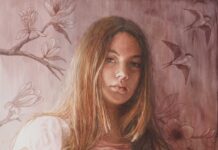“Having a good understanding of how to use your materials makes the hard job of painting outside just that bit easier,” says Poppy Balser. “It’s valuable to spend some time practicing in the studio before heading out to paint a tough subject. Some of the skills to practice are ripples, still water, sparkly sun glare, streaks of foam. Do this from photos first to keep it simple and resist the urge to “make a painting”; just focus on building skills.
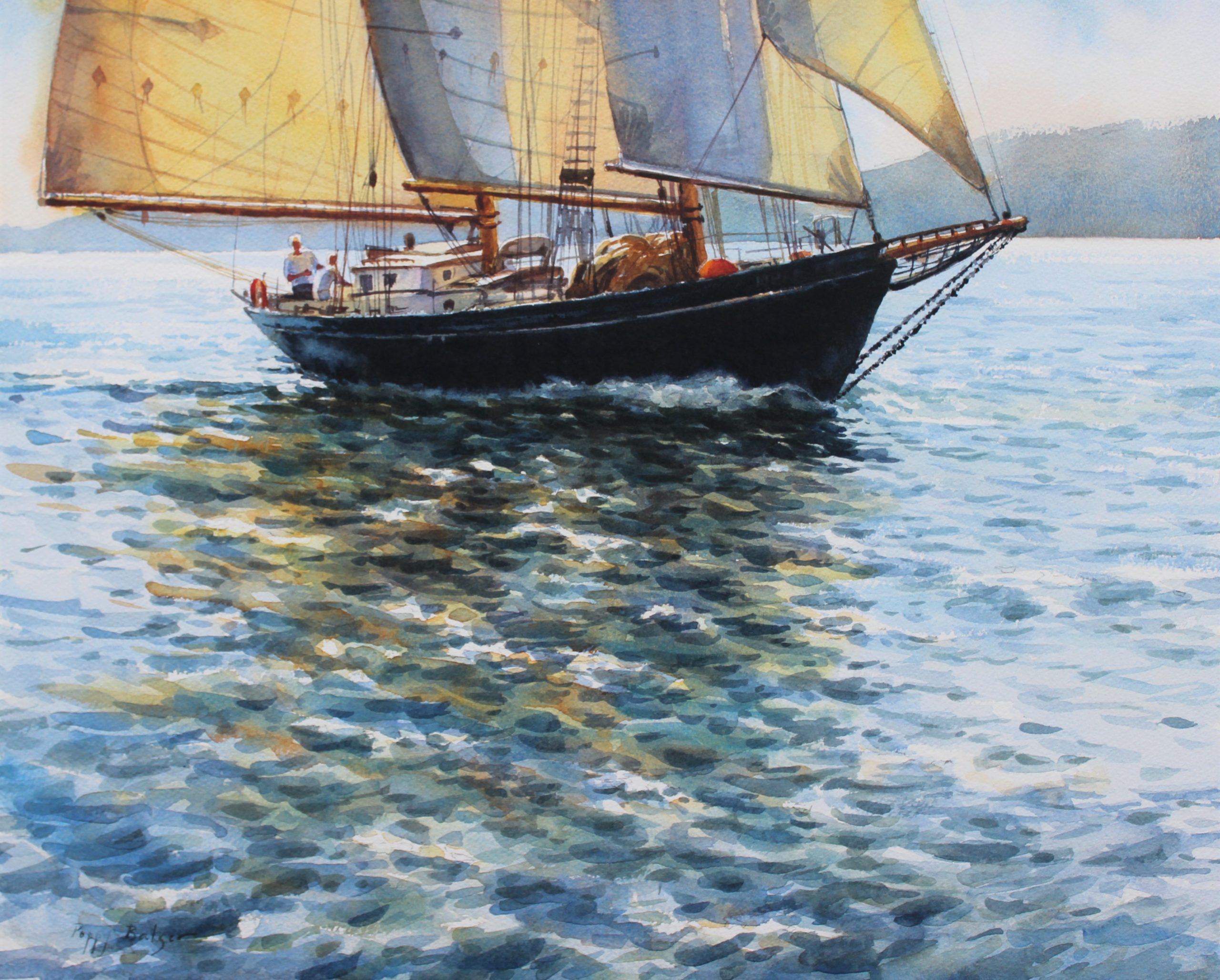
“Although she’s a classic beauty, ‘When and If, a schooner commissioned by General George S. Patton after WWII, plays a supporting role to the main attraction in this painting — the colorful, gently rippling reflections of the backlit sails on the water. I used the direction and pattern of brushstrokes to show the direction of the wind on the water.”
“Before traveling to a distant location I often will do a series of studies of subjects that I am likely to encounter. For example, prior to a trip to Bermuda for a plein air festival, I practiced painting palm trees and turquoise water.
“Even when I may not have brush in hand at the moment, I mentally break water down into brushstrokes. Whether I’m on board a boat, on a dock, or standing on the shore, I find it enthralling to observe the patterns of the waves. As I watch, I try to identify in my mind the shapes that make up what I am seeing.”
WATERCOLOR DEMONSTRATION:
PAINTING WATER
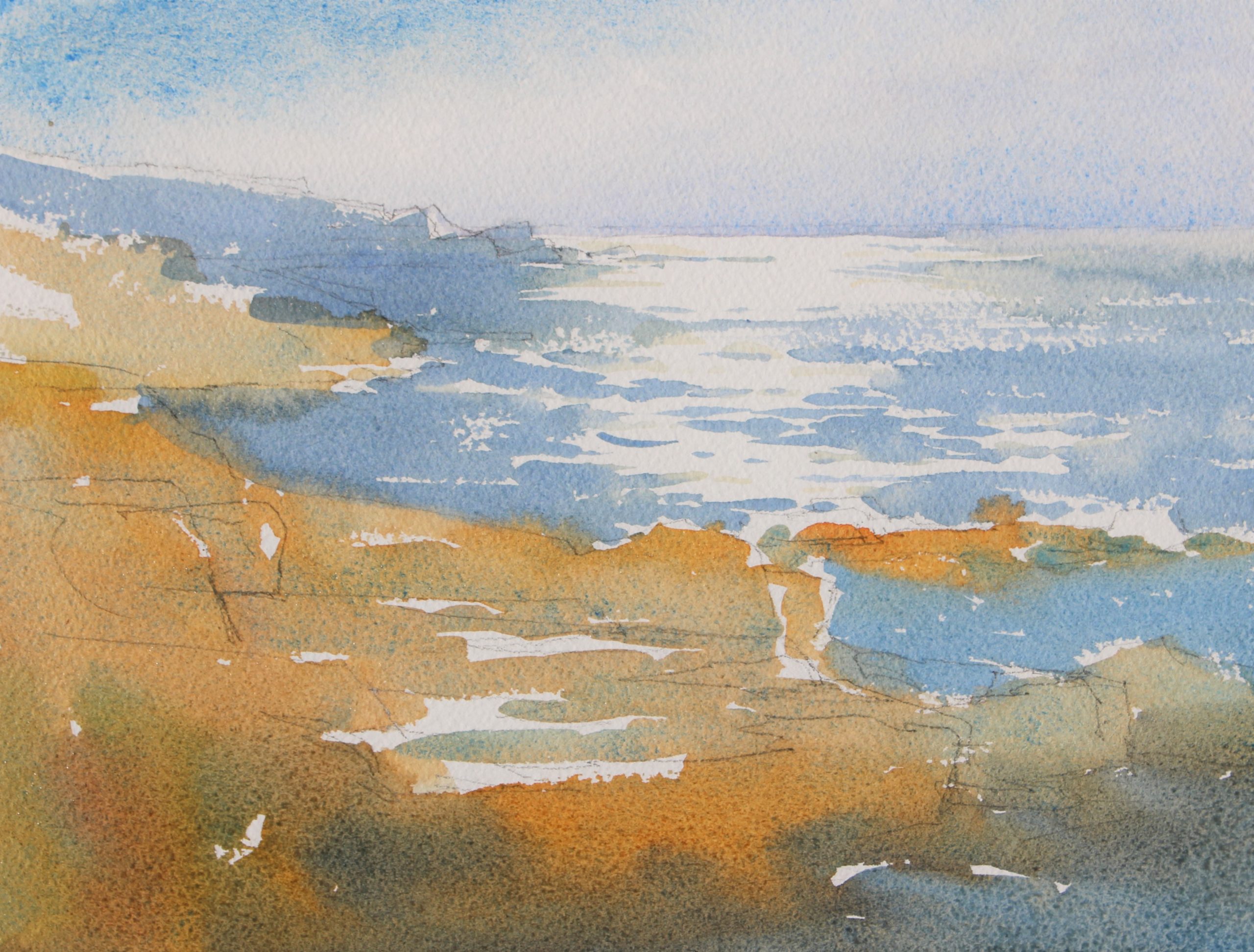
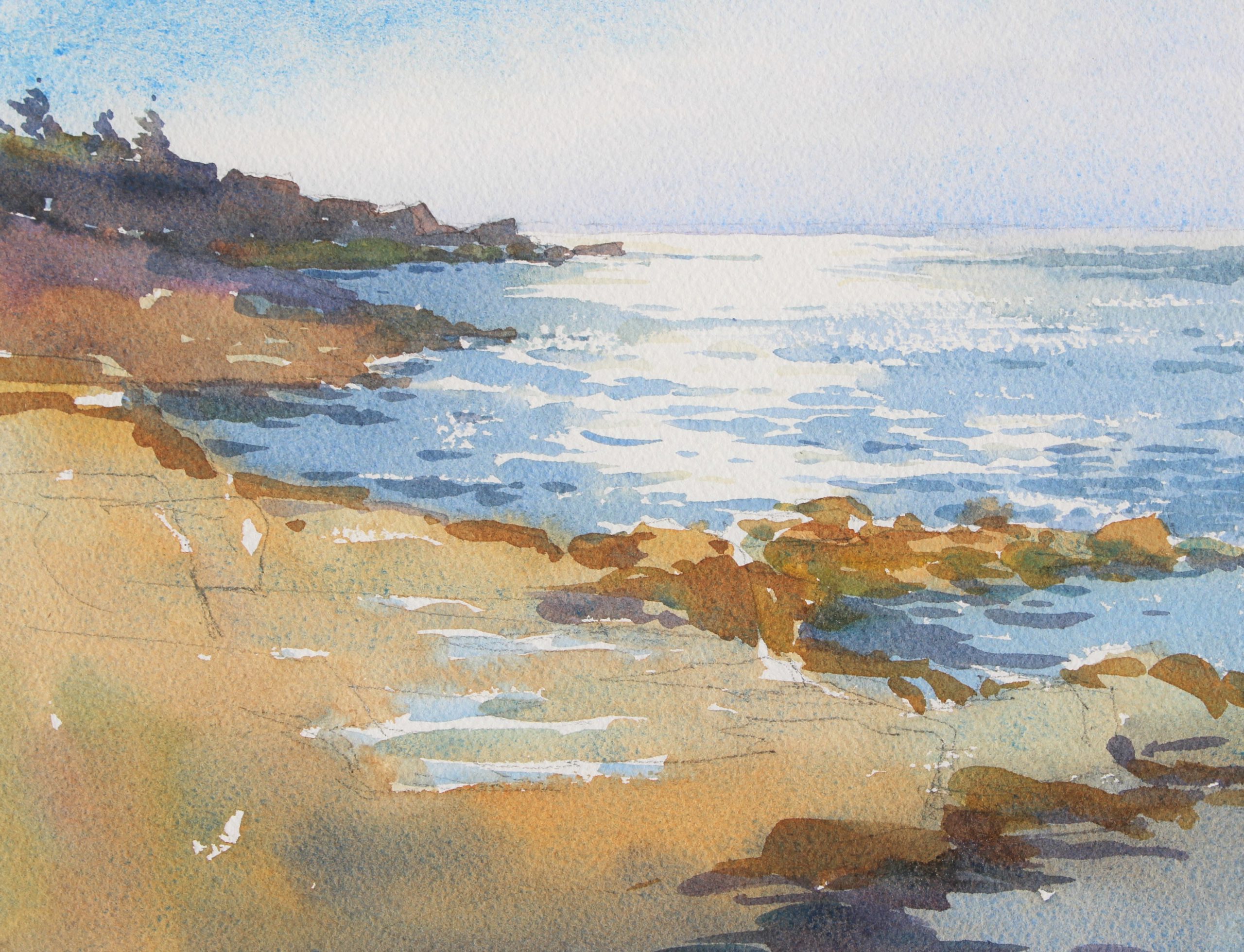


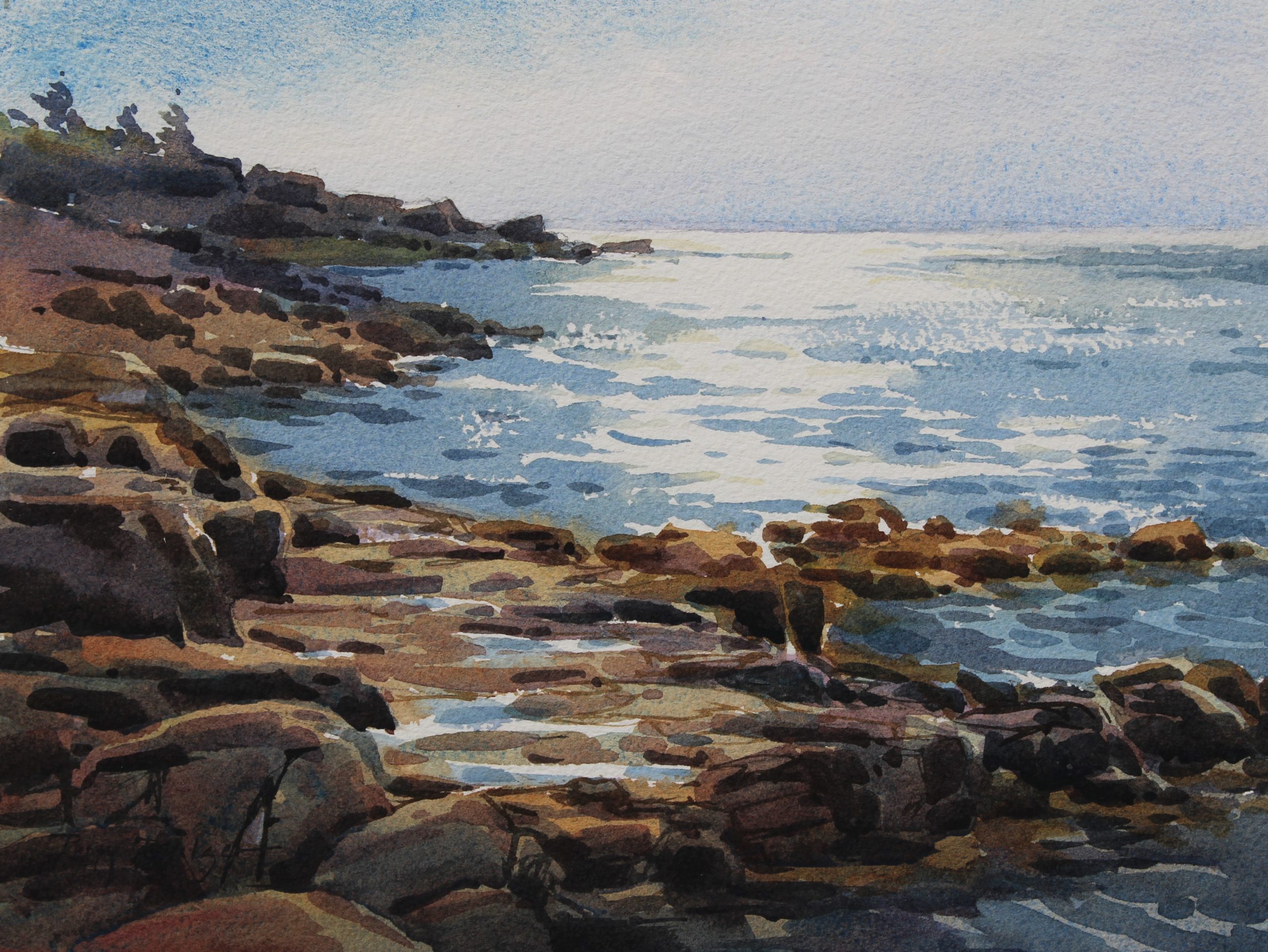
For more watercolor tutorials like this one, sign up for our free weekly e-newsletter.

